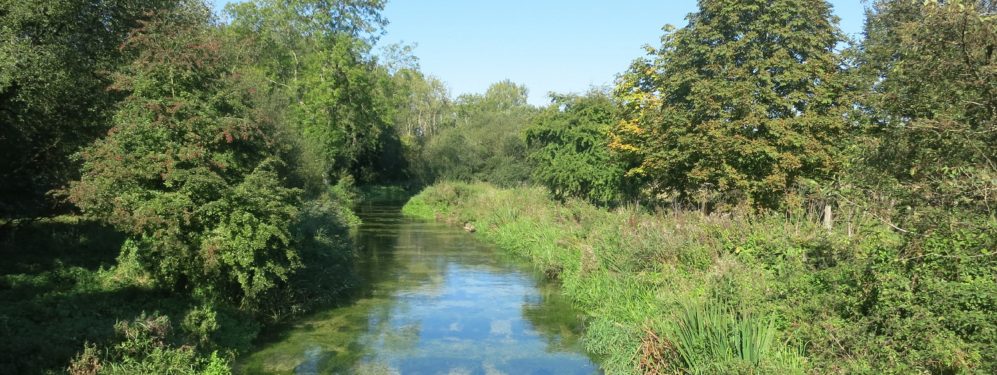Hampshire Day is celebrated on 15th July, the feast day of St Swithin, an Anglo-Saxon bishop of Winchester. In celebration we present our portrait of the county along with our Map of Hampshire.
Hampshire is a maritime county of the south coast of England. A seaborne county and a landward county, a rural and an urban county, Hampshire looks in two directions.
The south coast of Hampshire, on the English Channel, looks to the sea. The natural coastline is ragged with the river estuaries, islands and creeks, in among which are many towns, ports and resorts.

Southampton is the largest city in Hampshire and the busiest commercial port in the United Kingdom. The city stands at the northernmost point of Southampton Water at the meeting of the River Test and River Itchen. Southampton Water provides a deep, broad, sheltered roadstead, which has ensured Southampton’s foremost place among the Channel ports. Southampton is noted for its association with the Titanic, the Spitfire and more recently a number of the largest cruise ships in the world. Bargate was constructed in Norman times as the main gateway to the city.
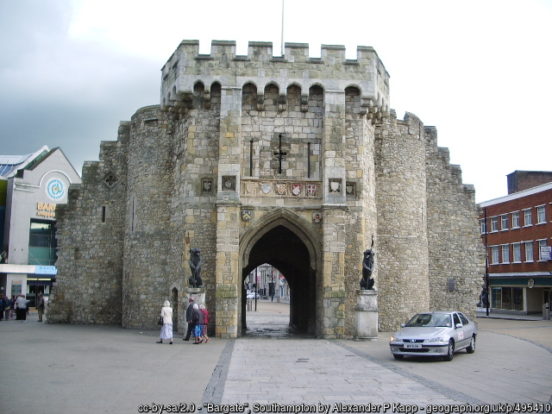
The south-east of Hampshire is very developed with its towns expanded into a loose conurbation. Fareham stands at the north-west tip of Portsmouth Harbour. The town was a major producer of bricks, tiles and chimney pots, supplying the “Fareham red bricks” for the Royal Albert Hall. Gosport lies on a peninsula on the western side of Portsmouth Harbour opposite the City of Portsmouth. It was a formerly a major naval town. Portchester Castle is a mediæval castle built within a former Roman fort at Portchester at the north of Portsmouth Harbour.
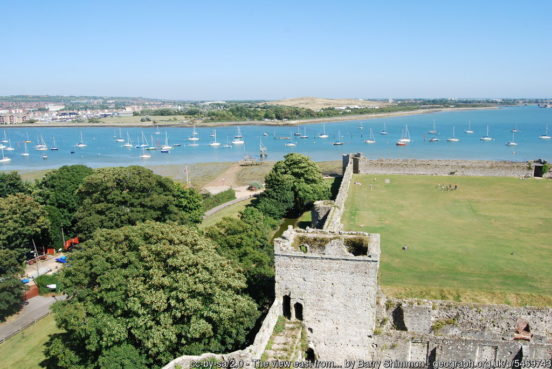
Portsmouth is the home of the Royal Navy, for which it is the greatest and most famous port. The city stands on its own island, Portsea Island, facing the English Channel, with a capacious, sheltered, natural harbour, which has been its foundation and fortune.
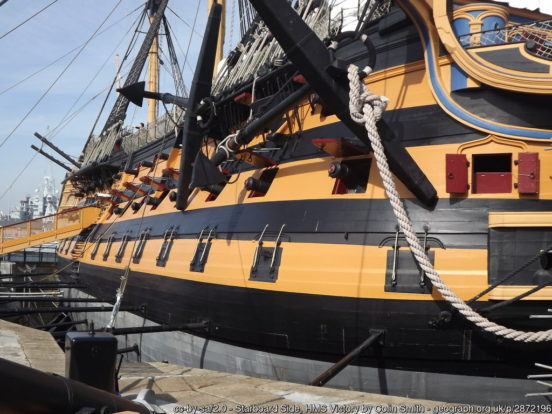
North of Portsmouth are the towns of Waterlooville and, at the north end of Langstone harbour, Havant. Within Langstone Harbour is Hayling Island. Although largely residential, Hayling is also a holiday, windsurfing and sailing centre, the site where windsurfing was invented.
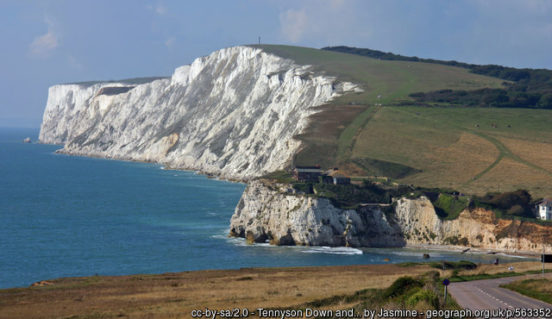
Across the Solent is the Isle of Wight, a self-reliant island (and once a separate Jutish kingdom) but a part of Hampshire nevertheless. Queen Victoria fell in love with the island and stayed frequently at Osborne House (EH).

The Island is famous for its Victorian resort towns (e.g. Sandown, Ryde, Ventnor), its dramatic coastline (e.g. the Needles, Tennyson Down) and the peace of its unspoiled interior. Knowle Mill (NT), near Bembridge at the island’s eastern tip, is a preserved tower mill built c. 1700 and painted by Turner in 1795. Cowes is a world famous Yachting centre.

In the north and centre of the mainland of the county the substrate is the Southern England Chalk Formation, seen in Salisbury Plain and the South Downs, and in Hampshire by hills with steep slopes where they border the clays to the south. A large area of the downs is now protected in the East Hampshire Area of Outstanding Natural Beauty.
Inland Hampshire is a county of farms. The Itchen and Test are trout rivers that flow from the chalk through wooded valleys into Southampton Water. Nestled in a valley on the downs is Selborne, and the countryside surrounding the village was the location of Gilbert White’s pioneering observations on natural history recorded in “The Natural History of Selborne”.

The county town at its heart is Winchester. Winchester’s Norman cathedral, the seat of one of the land’s most senior bishoprics, dominates the centre of the mediæval city, while a Victorian statue of King Alfred reminds us that Winchester was the capital of Wessex and Anglo-Saxon England. Beyond Winchester, Hampshire’s picture-postcard countryside rolls all around the traveller. Hinton Ampner House (NT) is a neo-Georgian house with formal 20th-century gardens.

The border with Surrey in the far north-east of the county is formed by the River Blackwater. In the Blackwater valley lie Aldershot, known as the “Home of the British Army”, and Farnborough, best known for Farnborough Aerodrome at which is held the Farnborough Airshow. Nearby Bramshill House is one of the largest and most important Jacobean prodigy house mansions in England. To the west of these is Basingstoke, an old market town which developed rapidly after World War II in order to accommodate part of the London ‘overspill’.

The Vyne (NT) is a 16th-century estate and country house north of Basingstoke. In contrast, the north-west of the county is predominantly rural, apart from major town of Andover. The county’s highest point is the summit of Walbury Hill (974 feet) north of Andover.
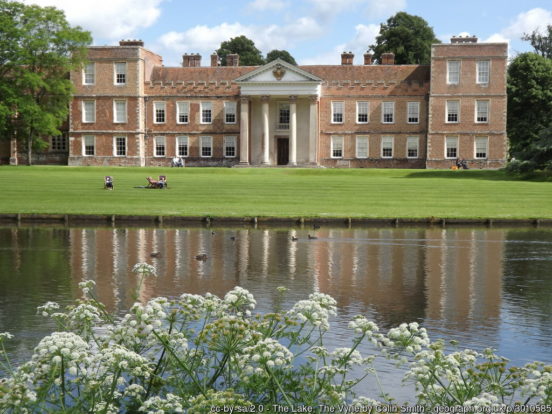
In the south-west of the county is the New Forest. The New Forest was laid out as a hunting reserve by William the Conqueror, but as broad woodland and heath it is far older. It is a timeworn place which appeals to one’s ancestral longings. The village of Beaulieu, in the south-west of the forest, is home to both the 13th-century Beaulieu Palace House and the National Motor Museum.

South of the New Forest, the coast facing the island is remarkably undeveloped as far west as the port town of Lymington. The port town of Keyhaven lies at one end of the shingle bank known as Hurst Spit which leads to Hurst Castle, an artillery fort established by Henry VIII.

To the west are the seaside towns of Milford-on-Sea, Barton-on-Sea and Highcliffe-on-Sea. Christchurch was founded in the 7th century at the meeting of the rivers Avon and Stour which flow into Christchurch Harbour. Christchurch town centre and the Harbour are overlooked by the 11th-century Grade I-listed Christchurch Priory. The Grade I-listed Christchurch Castle is of Norman origin. The town’s harbour, beaches, nature reserves and historically important buildings have made Christchurch a popular tourist destination.

At the far west of the Hampshire coast is the Victorian splendour of Bournemouth. Bournemouth was founded in 1810 by Lewis Tregonwell and named from the River Bourne. This new village became popular as a holiday resort but its growth accelerated with the arrival of the railway. It has remained a major tourist destination ever since. The glorious Central Gardens lead for several miles down the valley of the Bourne through the centre of the town reaching the sea at Bournemouth Pier.
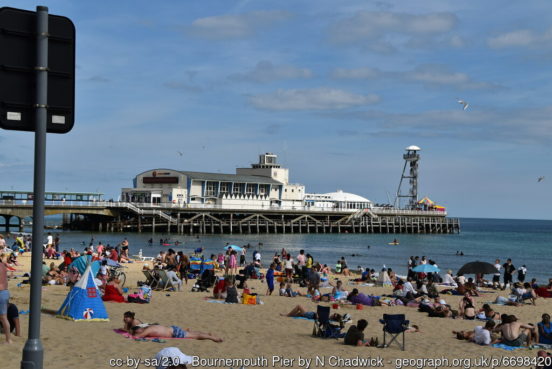
Hampshire was one of the first Saxon shires, recorded in 755 as Hamtunscir. It is possible that the western and northern borders of Hampshire may even go back to the very earliest conquests of Cerdic, legendary founder of Wessex, at the beginning of the sixth century. Hampshire became the centre of the Kingdom of Wessex, and many Saxon kings are buried at Winchester. After the Norman Conquest the county was favoured by Norman kings, who established the New Forest as a hunting forest. From the 12th century the ports grew in importance, fuelled by trade with the continent, wool and cloth manufacture in the county, and the fishing industry, and a shipbuilding industry was established. Over several centuries a series of castles and forts were constructed along the coast of the Solent to defend the harbours at Southampton and Portsmouth. These include the Roman fort at Portchester, and a series of forts built by Henry VIII including Hurst Castle, Calshot Castle and Netley Castle. Southampton has been host to many famous ships, including the Mayflower and the Titanic.

The flag of Hampshire comprises a Saxon crown on a red field, over a red rose on a gold field. The rose and crown have been popular symbols in the county for several centuries. The Saxon crown represents the county’s association with the era of Alfred the Great and his capital of Winchester. The red and white double Tudor rose is inspired by the double rose on the “Arthurian” table in the Great Hall in Winchester. The county day is 15 July, the feast day of St Swithin, an Anglo-Saxon bishop of Winchester.


